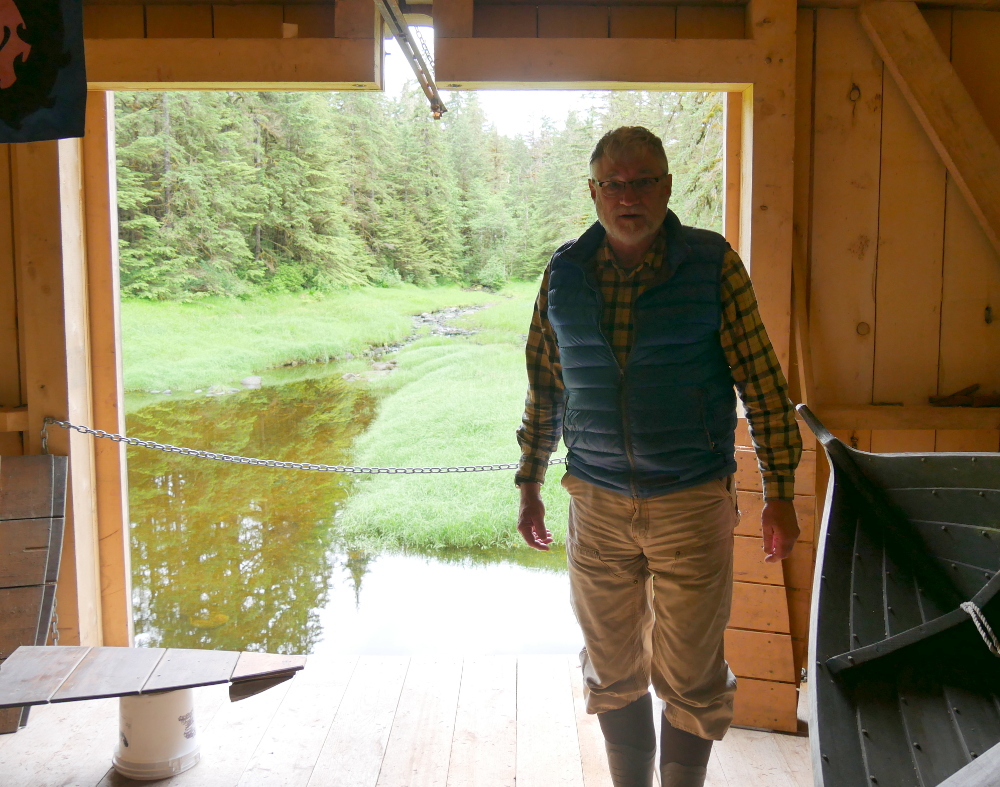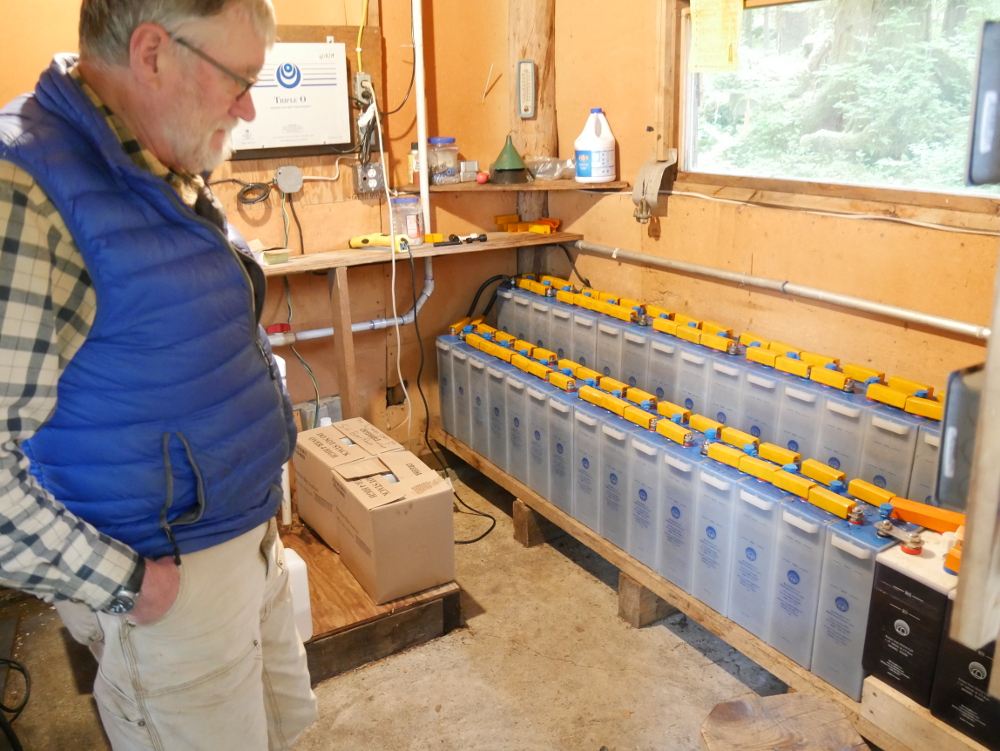
A Kupreanof Island property owner hopes this summer to begin construction of a small hydroelectric power project across from Petersburg. The turbine would provide only enough electricity for his home, part of the year. The improvement, in itself, isn’t that unusual. But the home owner has been navigating his way through federal approvals that have taken years.
Doug Leen’s stone and log cabin is just south of the mouth of Petersburg Creek. It used to belong to the late state wildlife biologist Harry Merriam and commands views of the Wrangell Narrows, the Petersburg cemetery and state ferry terminal. But behind the house is an unnamed creek where he hopes to generate power.
In June, it’s overgrown with shoreline grasses and a short walk to where his hydro generator will be.
“This is going to be the outflow of the system,” Leen explained. “And the powerhouse is going to sit right here. The water will spill here and will going into a pile of rocks, disperse the energy. They’re really worried about washing all this out..”
State biologists have found coho, Dolly Varden, cutthroat trout and sculpin in the creek and said for that reason it was important not to block fish passage or suck small fish into a generator. Instead, Leen plans to divert some of the water, generate power and return that water back to the creek, a plan the state has OK’d.
At this spot the creek is almost small enough to hop across. But because of where it is, it requires approval from the Federal Energy Regulatory Commission.
“Anytime power’s produced in a federal stream FERC gets involved, like it or not,” he said. “So I had to jump that hurdle. So I applied for a FERC exemption in 2011 or 12. Everybody said get a FERC exemption and I was turned down and turned down and turned down…”
Leen hasn’t been pursuing the project for the last 11 years. He acknowledges losing interest because of those denials. But the last few years he was convinced to try a different approach: instead of damming the creek, just divert some of the water.
“It’s the same application for Hoover Dam, believe it or not,” Leen said. “And I’m talking a stream three feet wide that I’m going to have a little box that carries water and a six-inch pipe and it goes through a 40 pound little machine called a, it’s a generator, a turbine.”

To the north and south of him Leen has neighbors with small hydro projects, but the difference is those streams are on private land or owned by the city of Kupreanof, not the Tongass National Forest. After years of filings, FERC on May 21 of this year granted Leen an exemption from licensing. That gives the commission’s OK to proceed. FERC staffers drafted an environmental review of the project and the Forest Service has stated its support for the conclusions of that review. Leen still needs a special use authorization from the Forest Service before starting construction.
He’s also continuing with filing hundreds of pages of paperwork. He’s had to detail how he’ll manage invasive species and keep the public safe among other plans.
“I’ve got to have another plan for operations and maintenance,” Leen said. “And they want to know how often I’m going to do this and how I’m going to do it. And then I have to submit construction bid contract thing, I said, I’m doing all the work myself. I had to prove to them the funding’s, the banks are going to lend me the money for that. I said it’s in the bank. And that’s not good enough. So I had to send them my bank statement. It just goes on and on. Who knows what’s in the future but hopefully there’s a light in the end of this tunnel, water in the end of the conduit.”

Leen is already off-the-grid. His electricity comes from a diesel generator and solar panels on the roof. And it’s stored in a large bank of batteries in a two-story tower behind his home. But the sun is a rare visitor this soggy Southeast summer. And he dreams of harnessing the plentiful rainfall.
“For me it’s a hobby,” he said. “I mean it’s something to do and the power I’m going to get out of it is probably not even going to pay for itself but it’d just be cool to have a hydro system. It’ll be here as long as anybody wants to use it. So eventually it will pay for itself. And that means less diesel fuel hauled across the narrows.”
Leen is no stranger to the ways of the federal government. He was a seasonal ranger for seven years in the 1970s with the U.S. National Park Service in Wyoming before starting a career as a dentist. He’s also lobbied in the nation’s capital and has displayed his reproductions of historic park and monument posters there as well.
He estimates the paperwork for over a decade of filings will cost him about $1,500 while the construction will cost about $15,000 for the equipment once he gets the final go ahead. And after a decade of planning and regulatory work, actual construction could take just a couple of weeks.









